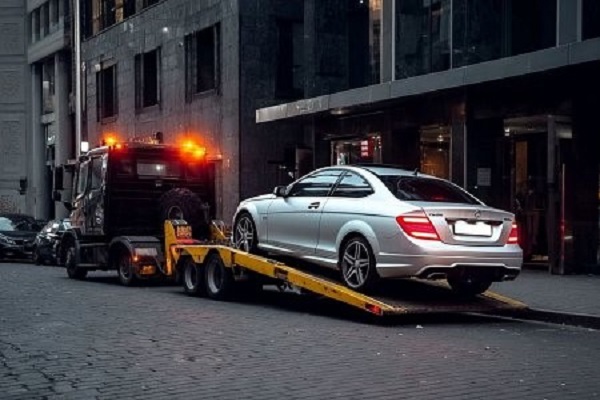The Hidden Costs of Car Ownership (That People Never Talk About)
There’s a whole world of expenses lurking behind the scenes. Some are small and sneaky, others hit like a freight train when you least expect it. And before you know it, your “affordable” car might be draining more money than you ever expected. Let’s dig into the messy bits of car ownership no one likes to talk about, and maybe save you a fair bit of stress (and cash) in the long run.
Table of Contents
The Obvious vs. Hidden Cost Divide
Most people walk into car ownership with a mental list of what they’ll need to spend. You’ve got the basics covered, car price, loan payments, fuel, and standard insurance. That all seems manageable enough. But what sneaks up on you are the things no one puts on the window sticker. Repairs that show up out of nowhere, fees you didn’t know existed, and gradual wear-and-tear that chips away at your bank account.
Part of the reason these costs stay hidden is because adverts love to focus on the monthly payment. If they showed the whole picture, a lot of us might think twice before signing on the dotted line. And let’s be honest, many of us didn’t have a clue how to budget for this stuff the first time round. Financial literacy around cars isn’t exactly taught at school.
Tire Costs: The Expensive Circle of Rubber
Tyres wear out faster than most people think. Depending on how and where you drive, you could be replacing them every 3 to 6 years. And not all tyres are created equal. For a basic sedan, a full set might cost around $400. But if you’re driving an SUV or a performance vehicle, that number could jump to $1,200 or more.
Then there are the extras. Neglect to rotate them regularly or ignore alignment issues, and your tyres could wear out unevenly and faster than they should. Got winter tyres? You’ll need to swap those out every season, which can rack up storage and labour fees. Go cheap on tyres and you’ll likely pay the price in safety, fuel efficiency, and needing to replace them sooner. It’s one of those classic cases where trying to save a few bucks ends up costing more in the long run.
Insurance: Beyond the Basic Premium
So you’ve budgeted for your monthly insurance premium, and you think you’re set. But then rates creep up quietly each year, especially if you’ve had a claim or you’re getting older. Your postcode can also mess with your rates, move to a busier area or one with higher crime, and suddenly your “good driver discount” doesn’t do much.
Basic policies often have huge gaps too. You might think you’re covered for everything, until your car gets keyed or a tree branch lands on the bonnet. Add another car to the household and things get even trickier. Insurance for a second vehicle doesn’t always mean twice the cost , sometimes it’s worse.

Maintenance and Servicing: The Escalating Expense
Even if your car’s new, maintenance isn’t something you can skip. Oil changes, filters, spark plugs, brake pads , they all need regular attention. And once your car crosses the five-year mark, that’s when the real fun begins. Suspension issues, alternator failures, timing belts snapping , these aren’t cheap fixes.
Dealerships often charge a premium for work, and while they might have the best tools for the job, you’ll often find good independent shops that can do the same work for a lot less. But not everything’s a DIY project. Try fiddling with a transmission or hybrid battery replacement on your own and you’ll be in for a world of regret.
Depreciation: The Silent Wealth Killer
Here’s a depressing fact: the moment you drive your car off the lot, it’s probably lost 20 to 30 percent of its value. Even if you baby it, keep it sparkling clean, and rarely drive it, depreciation keeps ticking away in the background.
Mileage makes a big difference too. Every kilometre adds up, and after a while, it can knock thousands off your resale value. Then you’ve got market factors to worry about. A sudden drop in used car demand or fuel price changes can mess with how much your vehicle’s worth overnight. It’s like watching your money slowly evaporate.
Registration, Licensing, and Government Fees
Every year, without fail, there’s the delightful reminder to register your car. Some states or territories charge flat fees, others base it on your vehicle’s weight or emissions. And then there’s your licence renewal , might include eye tests, admin fees, or even retaking your test if you’ve been off the road for a while.
If your area requires emissions testing, that’s another fee and potential headache, especially if your car fails and needs repairs to pass. And in some places, you’ll even get hit with annual property taxes on your vehicle. Nothing like paying tax on something you already bought.
Expert Insight: Detailing and Long-term Value Preservation
We’ve talked with the guys at MobiGleam, car detailing experts in Vancouver , who’ve seen it all. From brand-new vehicles neglected after one winter, to decade-old sedans that still shine like showroom models. According to their team, the condition of your car’s exterior and interior plays a huge role in how much value it holds down the line.
Paint gets battered by sun, salt, rain, and road grime. Let that build up and you’ll start seeing fading, peeling, or rust before you know it. MobiGleam recommends ceramic coatings for long-term protection. Sure, it’s a bit of an upfront investment, but it keeps the paint safe from damage and cuts down how often you need to wash or wax the car.
Interiors matter too. Stained seats, sun-cracked leather, mystery smells from the backseat, all of it can tank your resale value faster than you’d think. Their team often sees cars lose thousands in potential trade-in value simply because they were never properly cared for inside. Fabric protection and regular deep cleaning go a long way, and they swear by preventative care rather than last-minute fixes.
Their bottom line? Proper detailing isn’t just about looks. It’s about preserving the actual dollar value of your vehicle. And when you compare the long-term benefits to the one-time cost of a professional job, it often pays for itself.
Emergency and Unexpected Costs
Things go sideways sometimes. A dead battery, a flat tyre in the middle of nowhere, or a surprise engine failure right after your warranty ends. Roadside assistance helps, but isn’t always included with your car or insurance.
Had a minor accident? Even a tiny fender bender could leave you with a big repair bill and a nice little spike in your premiums. Theft and vandalism aren’t always fully covered either, and weather can be a real wildcard. A hailstorm or flash flood can ruin your ride in minutes. These aren’t daily expenses, but when they hit, they hit hard.
Financing Hidden Costs
Loans come with all sorts of extras too. Extended warranties sound comforting, but loads of people pay for them and never use them. GAP insurance? Might save your bacon if your car’s totalled while your loan is still big, but it’s one more thing to budget for.
Some loans sneak in early repayment penalties or fees if you try to refinance. Others lock you into a weird structure where you’re paying more in interest than you realised. These little traps don’t always show up until you’re knee-deep in the loan.

Lifestyle and Convenience Costs
Parking’s a cost that sneaks in too, especially if you live in a city. Monthly parking permits, metered spots, or tickets from that one time you forgot to move your car on street cleaning day , they add up. Toll roads, congestion charges, bridge fees, all silently nibble away at your budget.
Car washes might seem cheap here and there, but if you go regularly (or avoid washing it yourself), you’ll spend more than you think over the years. Got no garage? Covered parking rentals or storage solutions can be surprisingly expensive, especially during storms or travel.
The True Cost Calculation
Let’s say you buy a decent second-hand sedan for $15,000. Add in insurance at $1,500 per year, maintenance around $1,000, registration fees, tyre replacements every few years, and surprise repairs , and you’re looking at another $3,000 to $4,000 a year, easy.
Break it down per kilometre and the cost jumps way past the fuel price alone. Public transport, rideshares, or even renting a car occasionally might actually make more sense if you’re not using your car much. Doing a proper break-even analysis based on how often you drive can be a real eye-opener.
Strategies for Managing Hidden Costs
One of the best things you can do is stay ahead of problems. That means getting regular checks, keeping up with fluid changes, and replacing parts before they fully fail. It’s boring, but it works.
When it’s time to shop, compare prices on tyres and insurance, look into bundled services, and don’t get bullied into extra add-ons. Learn what you can do safely yourself , changing wiper blades or cabin filters, for instance , but know when to call in the pros. Having a good mechanic and detailer in your corner can save you heaps.
Don’t Let the Numbers Catch You Off Guard
Owning a car isn’t just about making a few payments and filling up the tank. There’s a whole ecosystem of sneaky costs that creep in slowly, and unless you’ve planned for them, they can leave you wondering where your paycheque went.
Being aware of these hidden expenses helps you make better choices , whether that’s picking a more reliable model, holding off on buying for now, or just adjusting your budget. You don’t have to swear off driving forever, but it helps to know the true cost before you jump in.
